

Authors are invited to submit their manuscript in good English and in doc-format or docx-format.
Papers should be as brief as possible and must conform to the following specifications.
Article structure
Follow this order when typing manuscripts: Title, Authors, Affiliations, Abstract, Keywords, Main text, Acknowledgment, References. Figures, Figure Captions and Tables are recommended to be imported into the text.
Introduction State the objectives of the work and provide an adequate background, avoiding a detailed literature survey or a summary of the results. Figures, tables and equations should be avoided.
Experimental Provide sufficient detail to enable the experiments to be reproduced. Methods already published should be indicated by a reference and only relevant modifications should be described.
Results and Discussion This part should explore the significance of the original research results. A separated Results and Discussion section is often appropriate and may be organized into subheadings. Avoid extensive citations and discussion of published literature.
Conclusions Conclusions must be strict, scientific and objective, giving a brief summarization of the results and their significance.
Acknowledgments The acknowledgments should be brief and precede the references.
Essential title page information
Title Concise and informative. Titles are often used in information-retrieval systems. Avoid non-standard or uncommon abbreviations and formula where possible.
Author names and affiliations Please clearly indicate the given name(s) and family name(s) of each author and check that all names are accurately spelled. Signature units should be typed in English on the first page of the paper including the name of affiliation, city, postcode, province, and nation.
Corresponding author Clearly indicate who will handle correspondence at all stages of refereeing and publication, also post-publication. Ensure that academic degree, professional title, and the e-mail address are given and that contact details are kept up to date by the corresponding author.
Abstract A concise and factual abstract that summarizes the main findings of the paper in 200-250 words is required. The abstract should briefly state the purpose of the research, the main methods, the principal results and major conclusions. Non-standard or uncommon abbreviations should be avoided, or must be defined at their first mention if essential. References and formulas should also be avoided.
Key words Immediately after the abstract, provide 5-7 key words and avoid general and plural terms and multiple concepts (avoid, for example, 'and', 'of'). Be sparing with abbreviations: only abbreviations firmly established in the field may be eligible.
Nomenclature and units
Follow internationally accepted rules and conventions: use the international system of units (SI). If other quantities are mentioned, give their equivalent in SI. A symbol list is recommended when using a large amount of symbols. Each paper should be consistent within itself as to abbreviations, symbols and units.
Illustrations
• Make sure that you use uniform lettering and sizing of your original figures.
• Preferred fonts: Times New Roman, Symbol, or similar ones.
• Number the illustrations according to their sequence in the text.
• Provide captions to illustrations separately.
• Size the illustrations close to the desired dimensions of the published version.
• Submit each illustration as a separate file in format of TIFF (keep to a minimum of 300 dpi).
Tables
Please submit tables as editable text and not as images. Tables should be placed next to the relevant text in the article. Number tables consecutively in accordance with their appearance in the text and place any table notes below the table body. Be sparing in the use of tables and ensure that the data presented in them do not duplicate results described elsewhere in the article. Please avoid using vertical rules.
References
More than 20 references are recommended in which books should not exceed 30%.
Text: Indicate references by number(s) in square brackets in line with the text. The actual authors can be referred to, but the reference number(s) must always be given.
Example: “..... as demonstrated in Ref. [3, 6]. Barnaby and Jones [8] obtained a different result ....”
List: Number the references (numbers in square brackets) in the list in the order in which they appear in the text. For non-English references, the language should be given.
Examples:
Reference to a journal publication:
[Serial number] Authors, title, abbreviated journal name, Volume (publication year) beginning and end pages.
[1] Z. Wang, J.J. Li, L.W. Ren, Y. Zhang, J.W. Qiao, B.C. Wang, Serration Behavior in Zr-Cu-Al Glass-forming Systems, J. Iron Steel Res. Int. 23 (2016) 42-47.
[2] M. Wang, C. Zhang, F. Hu, K.M. Wu, R. Irina, Current status and trend of TRIP automotive steels, J. Iron Steel Res. 28 (2016) 1-7.
Reference to a book, dissertation, report:
[Serial number] Authors, title, edition, publisher, publication location, publication year.
[3] W. Strunk Jr., E.B. White, The elements of style, 3rd ed., Macmillan, New York, 1979.
Reference to a chapter in an edited book or proceedings:
[Serial number] Authors, in Editor of conference proceedings (Eds.), title of conference proceedings, publisher, publication location, publication year, beginning and end pages.
[4] G.R. Mettam, L.B. Adams, in: B.S. Jones, R.Z. Smith (Eds.), Introduction to the Electronic Age, E-Publishing, Inc., New York, 1994, pp. 281–304.
Reference to a patent:
[Serial number] Authors, Title, Nation, Patent number, Publication year.
[5] C.J. Won, Method for manufacturing hot rolled galvanized steel sheet at high speed with pickling skipped, US, 6258186B1, 2001.
Submission Fee
For all articles, authors will be asked to pay a publication fee prior to the article appearing in the journal. However, this fee only needs to be paid after the article has passed the reviewing by both experts and chief editors.
If the articles do not pass the final plagiarism check, the fees will not be returned.
Submission checklist
During the final checking of an article prior to sending it to the journal for reviewing, please ensure that the following items are present.
The corresponding author with contact details:
• E-mail address
• Available telephone number
All necessary files have been uploaded, and contain
• Manuscript in doc-format or docx-format
Further considerations
• Manuscript has been 'spell-checked' and 'grammar-checked'
• All references mentioned in the Reference list are cited in the text, and vice versa
• Figure Captions and Tables are given in the right places
• Permission has been obtained for use of copyrighted material from other sources (including the Internet)
来稿须知1)请登录我刊唯一官方网站远程稿件处理系统进行投稿,编辑部受理该稿件后会用E-mail发送“收稿通知”,收到该通知说明投稿成功,请作者留意是否收到该邮件。本刊已开通网上查询系统,作者投稿成功后,可随时登录网站输入稿件编号查询稿件状态。2)请在投稿时附最便捷的联系方式、电话和E-mail,编辑部一般采用这两种方式和作者联系。作者个人信息或通信方式有变时,请及时登录本刊网站进行修改,以确保稿酬...
简介《港工技术与管理》杂志在全国影响力巨大,是一本双月刊杂志。创刊以来,办刊质量和水平不断提高,主要栏目设置有:测量技术、信息技术、船机设备、工程管理、专题论述等。注重选题新奇和报道广度,以服务大众和保持理论高度为宗旨。它广受业界和广大读者的关注和好评,反映了该杂志在工业技术和管理领域的影响力和认可度。该杂志的内容涵盖广泛,涉及新技术、创新管理、环保技术和可持续发展等方面,旨在使读者了解工业界的最...
本刊主要刊载土壤科学方面的学术论文,试验研究报告,文献综述,简报,科研和生产实践中的新技术、新方法,国内外考察报告,重大学术活动报道等。对有创造性、质量高的学术论文,本刊将优先发表。欢迎有关专家、学者及相关专业学生投稿。投稿要求及注意事项:1.来稿要求论点明确,数据可靠,论据充分,条理清楚,文字简练通顺。每篇论文(包括图、表、参考文献、中英文摘要等)一般不超过8个印刷页,简报不超过6个印刷页。2....
来稿须知1、文稿应资料可靠、数据准确、具有创造性、科学性、实用性。应立论新颖、论据充分、数据可靠,文责自负(严禁抄袭),文字要精炼。2、姓名在文题下按序排列,排列应在投稿时确定。作者姓名、单位、详细地址及邮政编码务必写清楚,多作者稿署名时须征得其他作者同意,排好先后次序,接录稿通知后不再改动。3、文章要求在2000-2400字符,格式一般要包括:题目、作者及单位、邮编、内容摘要、关键词、正文、参考...
1. 投稿方式:在线投稿,邮箱投稿无效。在线投稿系统注册、投稿;请作者务必填写具体联系人的姓名、手机号码和电子邮箱、(发票抬头)单位、地址、邮政编码,以便及时告之消息和沟通。2. 来稿应具有创新性、科学性、实用性,且论点鲜明、层次清楚、数据可靠、文字精炼通顺,一般文章7000字左右为宜。3. 来稿须列出题目、作者姓名(不宜超过7位)、工作单位(全称,包括二级学院/单位...
《江苏科技信息》是由江苏省科学技术厅主管、江苏省科学技术情报研究所主办的学术期刊,是“中国核心期刊(遴选)期刊”“江苏省优秀期刊”“江苏省一级期刊”,被中国学术期刊网络出版总库(知网)、万方数据期刊网、维普期刊数据库等全文收录。本刊于1984年创刊,旬刊,国内外公开发行。本刊主要栏目有:科技战略研究、图书情报、管理与创新、基础研究、应用技术、科教研究、医药研究、科学与社会等。为了更好地配合刊物发展...
《海洋渔业》创刊于1979年,是由中国科学技术协会主管,中国水产学会、中国水产科学研究院东海水产研究所和科学出版社联合主办的综合性学术期刊,双月刊,国内外公开发行。主要刊载海洋水产科学领域具有前沿性、原创性、科学性、学术性和探索性的学术论文、研究简报和综述,以科学实验和调查数据的科学表达为基础,注重介绍最新数据资料和研究成果,侧重报道国家自然科学基金项目、国家重点和专项项目的最新研究成果,主要内容...
来稿须知1.文章应观点明确、语言简练、论据正确。 2.文章应不存在抄袭、剽窃、侵权等不良行为。文章应未在任何正式出版物上刊载过,且不允许一稿多投。本刊不接受任何语种的翻译稿。 3.文章应具有中英文题目、作者及单位、摘要及关键词,并附上参考文献。 4.文中插图应清晰,图中文字应语义明确,附有图/表序(全文图/表统一以 1,2,3…顺序编号)、图/表题,在正文中...
简介《当代传播》杂志(CN:65-1201/G2)内容丰富、思想健康,1985年创刊,目前以刊形式发行,刊物对外积极扩大宣传,致力于提高杂志质量与影响。《当代传播》杂志积累了20年的办刊经验和深厚的理论研究底蕴,得到新闻传播界的重神和青睐,其刊用的论文被其他知名刊物采用、转载、摘登的比率居全国新闻理论期刊前列。发文方向新闻与传播研究、传媒观察、新媒体、广告发行、媒介运营、舆论监督、广播电视专论、研...
来稿须知1、来稿要求观点明确,论据详实,条理清楚,文字简练,格式规范,注重创新性、针对性和特色,文章字数一般以5000~8000字为宜。论文内容的排序为:中文标题、作者姓名、工作单住(包括所在城市和邮政编码)、中文摘要、中文关键词、引言、正文、结束语、参考文献、英文标题、作者汉语拼音名、工作单位英译名(包括所在城市汉语拼音和邮政编码)、英文摘要、英文关键词。在稿件首页页脚处注明基金项目名称和编号、...
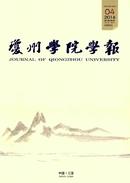
影响因子:0.360
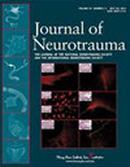
影响因子:4.869
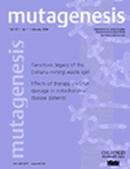
影响因子:2.954

影响因子:3.272
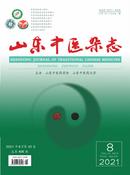
影响因子:1.190
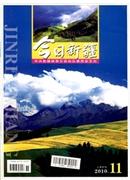
影响因子:0.000

影响因子:6.343

影响因子:1.345